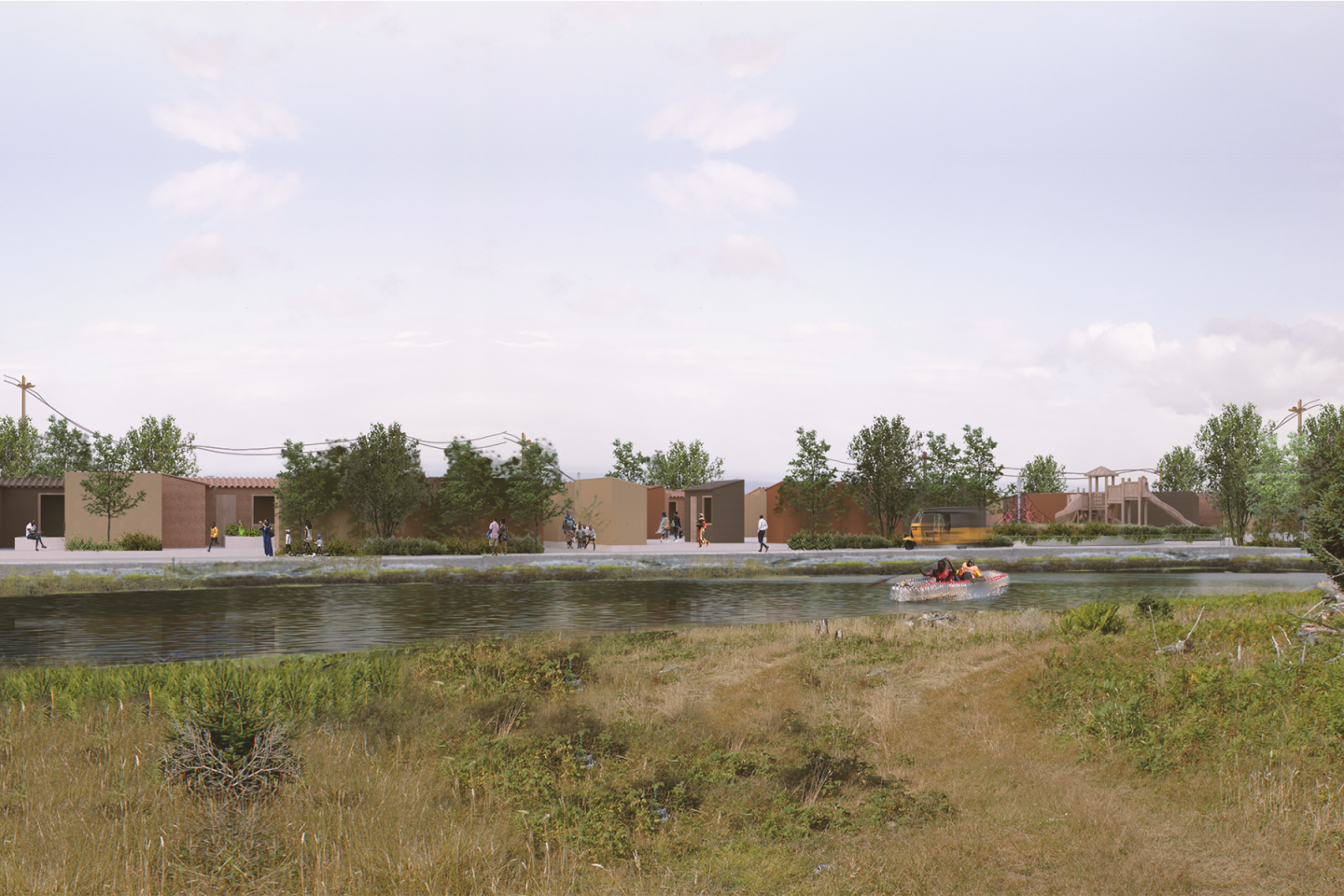The MatrixPlasticVillage project primarily aims to address the pressing challenges in Lagos. It is a comprehensive initiative designed to improve and revitalize the existing slums in the city. The project focuses on a strategically located coastal plot that encompasses slum settlements and a canal, which starkly highlights the visual disparity between the affluent and the impoverished. Its main purpose is to uplift the living conditions of the less fortunate and bridge the gap that exists between different socioeconomic classes. A significant portion of the population resides in slums under harsh living conditions. Nevertheless, slums possess distinct cultures and allure stemming from their diverse nature. The objective of the project is to preserve the cultural essence of the slum in this village, wherein each module carries its own narrative. In order to avoid identical modules, eight distinct plan typologies have been created using algorithmic design techniques. Each plan typology can be chosen by the owner and arranged according to their preferences. The rooftops and shared areas of the village are equipped with solar panels that harness sunlight to generate electricity. Additionally, rainwater is collected in tanks and subsequently utilized for sanitation and purified for clean water purposes. The village sources its food from the farm and fish markets. Organic waste is efficiently utilized as fertilizer to nourish crops, while other types of waste are sorted and separated in recycling facilities. The principal goal of the project is to create a self-sustaining life system. This system embraces all diversity based on the self-sustaining system. Natural resources such as sunlight, rain, and wind are cornerstones of that system. Community life includes living modules, agriculture areas, socializing squares, and green realms that contribute to a self-sustaining life system.
2022
The village, spanning an area of 12,800 m2, accommodates around 400 individuals and comprises residential units alongside service modules and a central square. Furthermore, floating bridges serve as connections between the two sides of the canal. The walls of the structures are constructed using recycled plastic blocks, which are created by compressing discarded plastic in specialized machines. The roofs and boards, on the other hand, are made from microplastic waste. Each individual living module has the capacity to recycle 9 tonnes of plastic, while the community as a whole consumes 72 tonnes, and the entire village utilizes a total of 1152 tonnes. The housing units are conceived as modular structures with simplistic designs. Each living module encompasses an area of 64 m2, providing space for both farming and indoor activities. The architectural form of these modules resembles that of the humble one-story houses commonly found in slum areas. This design approach allows each family to easily customize their living module according to their specific needs. The square shape of the modules and their adaptable layouts seamlessly integrate into the grid-based urban system prevalent in Lagos. The housing units are equipped with ample amenities and necessary facilities. Each average house unit consists of a compact bathroom, kitchen, living area, and sleeping space. The total indoor space varies between 15-24 m2, whereas the overall area of a single living module is 64 m2. Each living module contains a rainwater collection system and purification tank. That Lagos has a tropical savanna climate reveals optimum conditions to collect rainwater for irrigation of crops, sanitation, and drinking water. Also fountain in the square converts rainwater to drinkable water.
Kaan Servi








